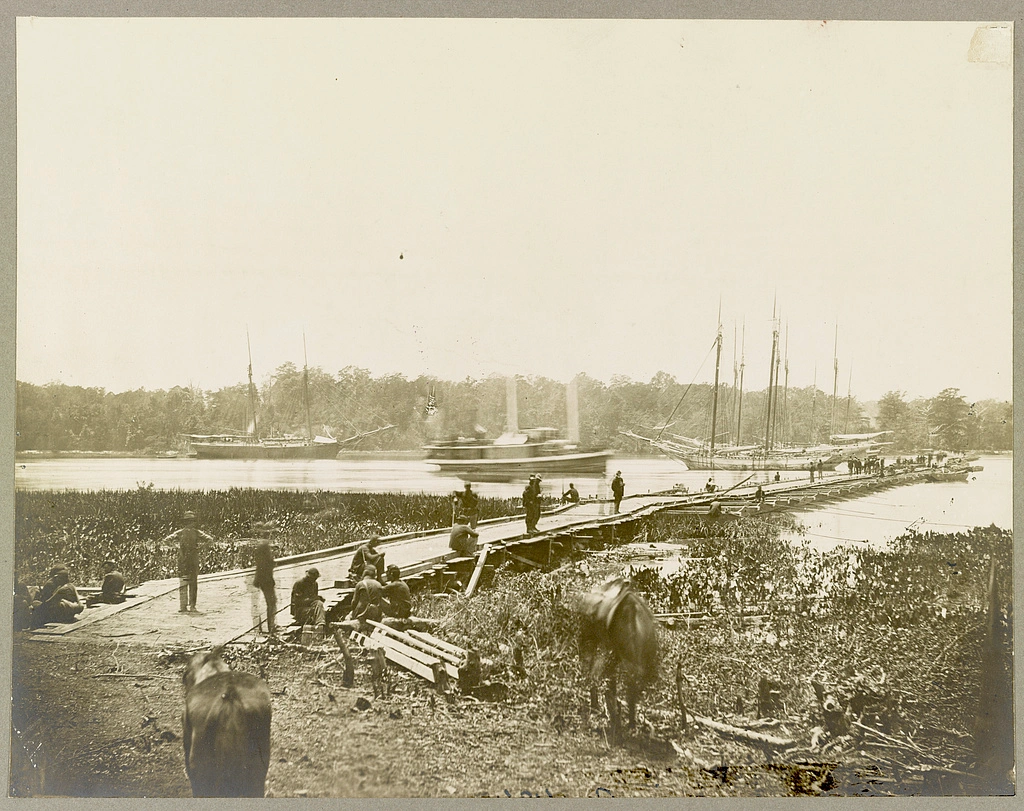The history of Colonial presence at Flowerdew starts a few years upon the conclusion of the First Anglo-Powatan War (1609-1614), during a period of settler expansion up the James River. In 1618 the Virginia Company of London granted a thousand acres on the James River to Sir George Yeardley, the Governor and Captain General of Virginia. In 1619 this property was named Flowerdew Hundred, the designation being a combination of ‘hundred’, an English land division sized between a parish and a county, and the patronymic of Yeardley’s wife, Temperance Flowerdew. By that year the plantation was already represented in the first general assembly by John Jefferson, an ancestor of Thomas Jefferson (Tyler 1906: 211). In 1621 Yeardley built the first windmill in Colonial America at Flowerdew (later known as Tobacco or Windmill point). The plantation was fortified and heavily armed on March 22, 1622, when Powhatan’s brother Opchanacanough led the first uprising (cf. Fausz 1978) against the colonists. The uprising caused only 6 casualties at Flowerdew; a 1626 colony law calling for all plantations (see map below) to be palisaded likely excluded Flowerdew for this reason (Deetz 1993: 20, 24).
Sometime between 1625-1626, Abraham Piersey (or Peirsey), a leading merchant of the Virginia Company, bought the plantation, which then came to be known as Piersey’s Hundred. Piersey built the Stone House as the heart of the plantation, which enlisted 60 occupants at the time. The 1625 Muster enlists 17 structures at the plantation, 10 of which dwellings (Deetz 1993: 45). After Piersey’s death in 1628 several sites appear to have gone into disuse, suggesting the settlement diminished in size (Deetz 1993: 56). In 1636 Piersey’s daughter, Elizabeth Stephens, re-patented the plantation as ‘Flower deue Hundred’ and subsequently sold it to William Barker, a mariner. By 1673 Flowerdew had already started to be subdivided (see papers). Eventually John Taylor bought the plantation and willed it to his heirs in 1709. During the late 17th c. and early 18th., Flowerdew was associated with a town downstream of the James, Flowerdew Towne (from 1683) or Powhatantown (from 1702). After 1720 there was a ferry service on the James that connected to the north side of the river; a tavern existed near that location to cater to travelers. However, Flowerdew/Powhatan Towne, established by the General Assembly programmatically in an effort to transfer the focus of tobacco commerce from plantations to trade centers, was short-lived (Deetz 1993: 58).
In 1725 Taylor’s descendants sold Flowerdew to Joshua Poythress, also known as ‘Joshua of Flower de Hundred’. During the British Richmond campaign (1-19 January 1781) of the American Revolutionary War, Flowerdew, still then a tobacco, wheat and corn plantation (though with few surviving sites, Deetz 1993: 114), was attacked by General Benedict Arnold. As part of this campaign, Arnold led a force of 1,600 troops into Virginia and sailed up the James destroying plantations and towns, including Richmond, catching Thomas Jefferson (then governor of Virginia) by surprise. During the Antebellum, John Willcox reunited the acres that had been since divided and built a new house on the land in 1804 (see papers). During the Civil War, in 1864, General Ulysses Grant constructed a pontoon across Flowerdew, at a spot known as Willcox Landing near site PG98, which led to the successful siege of Petersburg in 1865. The latter city had been a crucial railway node in General Robert E. Lee’s and Richmond’s supply chain.

